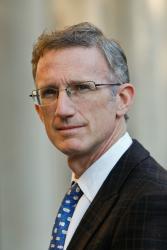As I sat on the curb in front of central Havana’s Capitolio, the impressive domed hall that resembles the U.S. Capitol building, and watched the 1950s-era Plymouths and Soviet-made Ladas go belching by, I was sure I had entered a surreal time warp a mere one-hour flight from Miami. And yet, after a week of meetings with Cuban and foreign diplomats, journalists, academics and artists, I became convinced that Cuba, indeed, is changing in many ways.
As a relative newcomer to the intricacies of the Cuba question, I was immediately struck by Cuba’s unique blend of decaying splendor, cultural prosperity, restricted freedoms and relative poverty. As everyone knows, Cuba’s highly centralized system, with its impressive achievements in health, education and the arts, is still recovering from the loss of massive Soviet subsidies, hurricanes and a steady outflow of its well-educated workforce. Creditors in China and elsewhere are growing tired of underwriting Cuba’s struggling economy as it tries to move away from its ossified past and into the 21st century. So something had to be done about liberalizing the economy.
A closer look, however, reveals something more profound—a wholesale mental shift, outlined clearly by President Raul Castro over the last two years, that the time has come to move the Cuban people from wholesale dependence on the state to a new era of individual responsibility and citizenship.
This is going to take time. The economic reforms or “updating” of Cuba’s Soviet-style economic system, approved last spring at the Communist Party’s first National Congress in 14 years, are just beginning to be enacted. They include an expansion of licenses for private enterprise (over 350,000 have been granted), opening more idle land to farmers and cooperatives, allowing businesses to hire employees, empowering people to buy and sell their houses and cars, and opening new lines of credit with no legal ceilings on how much Cubans can borrow. Non-state actors are allowed now to sell unlimited services and commodities directly to state-owned enterprises and joint ventures, thereby opening new channels of commercial activity between farmers and tourist hotels, for example. Think Viet Nam or China. The reforms include tough measures too, like shrinking the buying power of the longstanding ration card that every Cuban gets to purchase subsidized basic goods, cutting unemployment benefits, and eventually dismissing anywhere from 500,000 to one million employees from the state sector as bureaucratic middlemen become obsolete and tax revenues rise.
These changes, while painful, are reason enough to be optimistic about Cuba’s economic future. But something much more fundamental is at work—a turn away from government control of pricing and subsidizing products throughout the economy to a more decentralized framework of subsidizing persons based on need. At heart, the Castro government is prepared to move Cuba from a society based on equity of results to equality of opportunity, infused with a culture of humanism. Not that Cuba’s system ever offered true equality, as one taxi driver reminded me as we drove down Havana’s famous seaside Malecon. The door, however, is now opening wider to the inevitable rise in inequality that comes from capitalism, even restrained forms of it. Whether one is able to prosper as a self-employed restauranteur, or is the beneficiary of generous relatives sending remittances and goods home from Miami, new gradations in Cuba’s economic and social strata are on the way. As long as someone arrives at their wealth legally and pays their taxes, assured one senior party official, they are free to become rich.
The big question for Cuba’s leaders today is whether they can bring their people with them down this new, uncertain path after five decades of Cuban-style communism. If reforms happen too quickly, it could cause excessive dislocation and unhappiness and potentially destabilize the regime. Already bureaucrats who have something to lose under the new system are resisting change, much to Raul Castro’s chagrin. If the pace of change is too slow, on the other hand, budding entrepreneurs, the middle class and disaffected youth, who have no overt commitment to the values of the 1959 revolution, may give up sooner and head to greener pastures in the United States, Spain or Canada. As it is, Cubans are leaving the island in droves to join their families in Florida and beyond, beneficiaries of U.S. policies that grant Cubans preferred immigration benefits once their feet reach American soil, and of Spanish laws that grant some Cubans Spanish citizenship.
The trick for party officials, then, is to demonstrate enough tangible improvements that Cubans will maintain faith in their ability to lead the country even after the Castros leave the scene. This explains the Communist Party’s determined effort to intensify popular consultations throughout the island and to keep up the momentum and rhetoric of slow but steady change. “In everything we do,” said one official, “we will try to be inclusive.”
There is, indeed, a daunting list of challenges ahead. Cuban officials are working overtime to update legal codes and systems to conform to the new economic policies. A revised tax code is being drafted as well as designs for a new labor system that will handle the growing category of self-employed workers not currently covered by Cuba’s labor code. A massive education campaign is needed not only to inform and consult the general public but to explain to local officials and civil servants how this is all going to work. New rules for foreign investment remain unfinished business. And major investment is needed to update Cuba’s sagging infrastructure, especially in the telecommunications sector where cell phones and internet penetration remain the lowest in the hemisphere.
One area where Cuba seems to be moving in a positive direction is tourism. From 1990 to 2010, the estimated number of tourists has risen from 360,000 to 2.66 million. In addition, thanks to President Obama’s decision to allow Cuban-American families to visit the island and send remittances as much as they want, Cubans have received over 400,000 visits and roughly $2 billion from relatives in the United States. These are proving to be important sources of currency and commerce that are helping families cope with reduced subsidies and breathe life in the burgeoning private sector. A walk through crowded Old Havana, where construction crews are busy restoring one of the Americas’ great colonial treasures, offers compelling evidence that Cuba can be a strong magnet for Europeans, Canadians, Chinese and—some day—hundreds of thousands of American visitors. And Pope Benedict’s visit in late March will shine an international spotlight on a Cuba slowly opening its doors to the world, yes, but more importantly, to an increasingly vocal and confident Catholic Church intent on securing a more prominent and relevant place in Cuban society.
For now, Cuba’s slow-motion evolution toward a hybrid phase of economic liberalization and political control remains a work in progress. The next Communist Party conference to be held later this month is likely to bring only modest changes in the regime’s aging leadership, for example, but promises of adopting term limits for senior government officials appear all but certain to be fulfilled. Raul Castro, a military man who believes in discipline, organization and institutions, has instituted regular cabinet meetings and clear lines of communication. In this sense, he is no Fidel. These, too, are signs of change that will, with time, make long overdue reconciliation with the United States inevitable.



